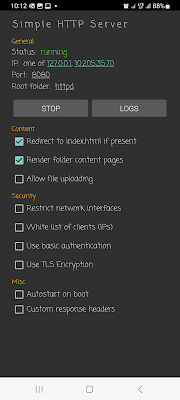Prolog
Wenn Studenten im Sommersemster 1992 in der Vorlesung Graphentheorie und Kombinatorik von Prof. Gerd Baron lauter wurden, nebenbei am Laptop für andere Übungen zu koodieren begannen oder sich zu unterhalten oder zu Essen begannen, dann wiederholte Professor Baron mit lauter Stimme:
Wir haben hier ein Universum und es geht um
die Anzahl der Anordnungen der Elemente einer endlichen Menge.
We have a universe here and
it's all about of the number of combinations of items in a finite set.
Professor Baron war für die Entstehung der Vorlesung + Übung Graphentheorie und Kombinatorik als zusätliches Fach zu Analysis, Algebra und linearer Algebra für Informatiker mitentscheidend. Prof. Baron war der Meinung, dass Graphentheorie (inklusive gewichteter Pfade + Adjazenzmatrix Darstellung) für Informatiker wegen Verständnis von Routing Tabellen ip routing graph und Suche nach dem kürzestem Routing Pfad und Algorithmen wie dem traveling salesmen essentliell seien und Kombinatorik für Informatiker wegen oft vieler fast gleichwertiger Lösungsmöglichkeiten essentiell sei:
In den Jahren 2021-2023 [ CV ] implementierte ich nach der Idea von Georg Toth mit ihm gemeinsam SUPU (SUdocu PUzzle). Für das Feature "Game Automation", wo der Computer die Hälte des Spielbretts automatisch vorlegt und der Spieler nur noch die obere Hälfte selbst setzen muss. brauchte ich eine heuristischen einfachen, aber genügend performanten Algorithmus mit lauter unterschiedlichen Kombinationen pro Durchlauf für den Computer und ich erinnerte mich an Professor Baron.
Nach einem Treffen mit meinem alten Freund, dem Mathematik- und Physikprofessor Michael F. (der ebenfalls im Finanzsektor in der Londoner City tätig war), und unserem Gespräch über invertierbare Matrizen, wurde ich nachts mit einigen technischen Hilfsmittlen penetriert und äußerte meine Idee laut. Anstatt die Information jedoch nur Unbekannten (vielleicht russischen oder rechtsextremen Spionen) zukommen zu lassen, verfasste ich diesen Artikel, damit jeder, auch alle Partner in den USA, davon Kenntnis nimmt.
Einfachste Art AES nach oben zu skalieren:
Kombinieren mehrerer Blockciphers mit Permutation
Verschlüsselung: plain text ⟶ 3DES PBox → AES → 2-fish ⟶ cipher bytes
Entschlüsselung: cipher bytes ⟶ 2-fish → AES → 3DES SBox ⟶ plain text
plain text ⟶ AES ⟶ 2-fish⟶ 3DES PBox (scrambled) ⟶ base64 ⟶ cipher ascii
Entschlüsselung: (zuerst base64 oder uudecode und dann symmetrische Entschlüsselung)
cipher ascii⟶ base64 ⟶ 3DES SBox(scrambled) → 2-fish→ AES ⟶ plain text
Man kann jetzt natürlich durch Enumerierung der einzelnen Symmetrischen Cipher Algorithmen eine Pipe skizzieren:
3DES = 0x1
AES = 0x2
2Fish = 0x4
Serpent = 0x8
Hexedezimal 0x148 für Verschlüsseln bedeuted 0x841 für Entschlüsseln.
plain ⟶ (3DES→2Fish→Serpent) ⟶⟶ encrypted
encrypted ⟶ (Serpent→2Fish→3DES) ⟶ plain
Beispiele für Kombinationen von mehreren symmetrischen Ciffrier-Algoríthmen:
Mathematisches Lemma (Funktionentheorie) lautet in etwa:
Angenommen, es ∃ ein-ein-deutige deterministische umkehrbare Funktionen, wo es zu jeder Funktion y=F(x,...) eine entsprechende Umkehrfunktion x =f(y,..) gibt =>,
dann ∃ zur Funktionenkette y = F( G( H( I( J( K( L( M( N(x, ...)))))))))
die Umkehrfunktion x = n( m( l( k( j( i( h( g( f(y,...))))))))).
 |
| Ansatz eines mathematischen Beweises |
Man kann jede Abbildung von ascii8 → ascii8
immer auch als Matrix vom R256 ➝ R256 betrachten.
Man kann jede Abbildung von ascii8 → ascii8
immer auch als Matrix vom R256 ➝ R256 betrachten.8-fache umkehrbare blockweise ver-/ent-schlüsselnde Funktionskette:
Probier einmal mein Online Webformular aus:
https://area23.at/net/Crypt/CoolCrypt.aspx
Github repository: github.com/heinrichelsigan/area23.at/
Ein einfacher Matrixverschlüsselungsalgorithmus von mir selbst:
Ich habe einen einfachen symmetrischen Matrixverschlüsselungsalgorithmus gefunden, der als einfache symmetrische Chiffre funktioniert mit NxN-Matrix-Transformation, nachdem ich diese Frage hier auf math.stackexchange.com/questions/4915786/ gestellt hatte.
Später entwickelte ich einen sehr einfachen Blockchiffre-Algorithmus namens ZenMatrix (um zu zeigen, dass ich selbst eine sehr einfache symmetrische Blockchiffre für die Ver- und Entschlüsselung schreiben kann)
R3 ➝ R3: v(3) x M(3,3) = v(3)
⎡ 1 ⎤ ⎡ 0 1 0 ⎤ ⎡ 2 ⎤
⎢ 2 ⎥ x ⎢ 0 0 1 ⎥ = ⎢ 3 ⎥
⎣ 3 ⎦ ⎣ 1 0 0 ⎦ ⎣ 1 ⎦
Inverse Matrix für umgekehrte symmetrische Verschlüsselung wäre:⎡ 2 ⎤ ⎡ 0 0 1 ⎤ ⎡ 1 ⎤
⎢ 3 ⎥ x ⎢ 1 0 0 ⎥ = ⎢ 2 ⎥
⎣ 1 ⎦ ⎣ 0 1 0 ⎦ ⎣ 3 ⎦
Ich habe einen einfachen symmetrischen Matrixverschlüsselungsalgorithmus gefunden, der als einfache symmetrische Chiffre funktioniert mit NxN-Matrix-Transformation, nachdem ich diese Frage hier auf math.stackexchange.com/questions/4915786/ gestellt hatte.
Später entwickelte ich einen sehr einfachen Blockchiffre-Algorithmus namens ZenMatrix (um zu zeigen, dass ich selbst eine sehr einfache symmetrische Blockchiffre für die Ver- und Entschlüsselung schreiben kann)







.jpg)





























